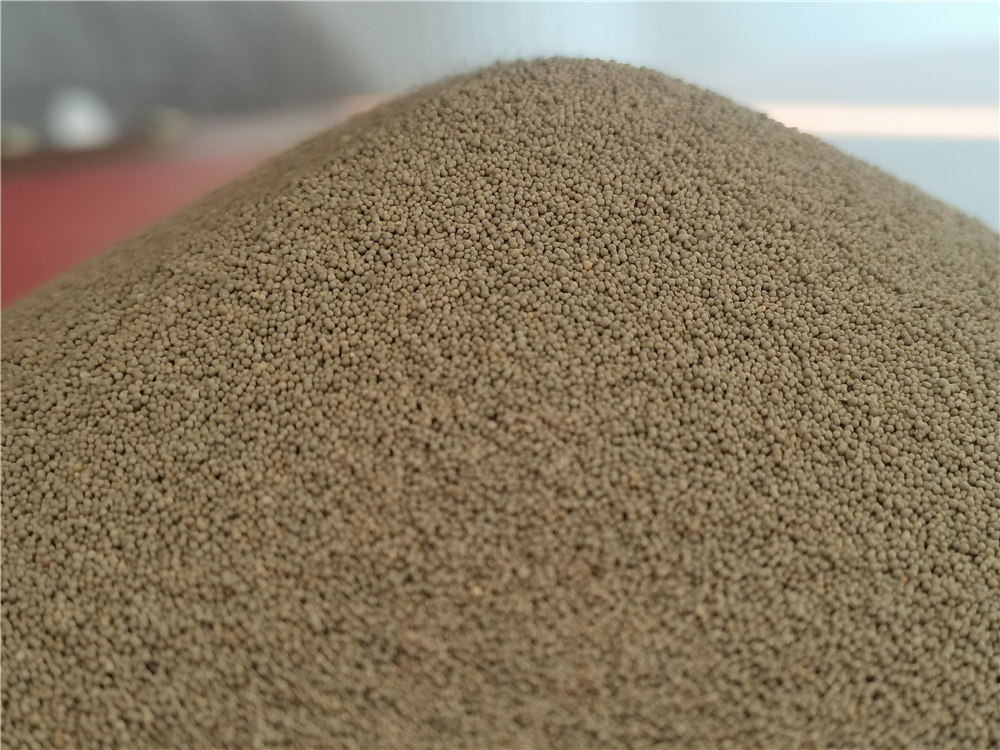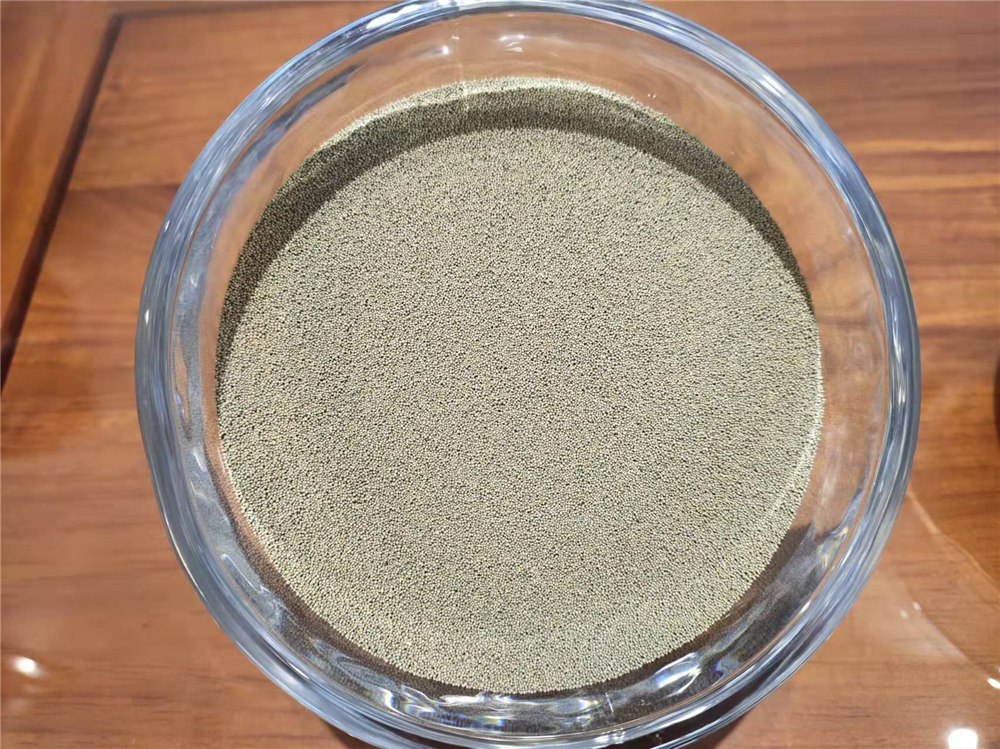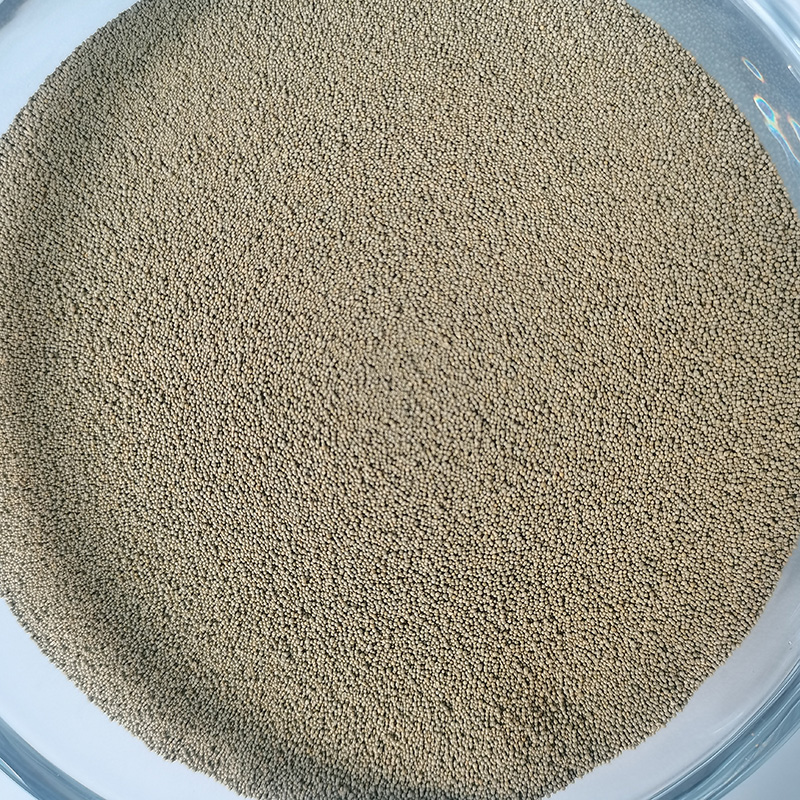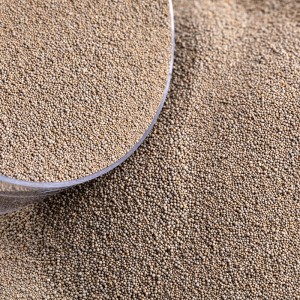Foundry Ceramic Sand
Features
• Uniform component composition
• Stable grain size distribution and air permeability
• High refractoriness (1825°C)
• High resistance to wear, crush and thermal shock
• Little thermal expansion
• Excellent fluidity and filling efficiency owing to being spherical
• Highest reclamation rate in the sand loop system

Application Sand Foundry Processes
RCS (Resin coated sand)
Cold box sand process
3D printing sand process (Include Furan resin and PDB Phenolic resin)
No-bake resin sand process (Include Furan resin and Alkali phenolic resin)
Investment process/ Lost wax foundry process/ Precision casting
Lost weight process/ Lost foam process
Water glass process

Description
Foundry Ceramic Sand - the perfect solution for all your foundry needs. This innovative product is also known as ceramsite, cerabeads, or ceramcast, and is made from calcined bauxite giving it an excellent spherical grain shape. With its high content of aluminum oxide and silicon oxide, Ceramic Sand boasts superior properties compared to conventional silica sand.
Ceramic Sand offers numerous advantages over silica sand. Firstly, it has a much higher refractoriness, making it ideal for use in high-temperature applications. It also has a low thermal expansion, ensuring that it maintains the sand mold or core shape and consistency even during extreme heat.
In addition to its impressive strength, Ceramic Sand offers excellent flowability - this ensures that it can be easily molded and shaped during the casting process. Furthermore, Ceramic Sand has a high resistance to wear, crush, and thermal shock, making it the ideal choice for all kinds of casting applications.
Another key advantage of using Foundry Ceramic Sand is that it has a high reclamation rate, meaning that it can be easily reused in the casting process. This, in turn, helps to reduce waste and minimize costs.
Overall, Foundry Ceramic Sand is a must-have for any foundry looking to improve their casting performance. With its excellent properties and superior strength, it offers a significant advantage over traditional silica sand.
Ceramic Sand Property
| Main Chemical Component | Al₂O₃ 70-75%,
Fe₂O₃<4%, |
Al₂O₃ 58-62%,
Fe₂O₃<2%, |
Al₂O₃ ≥50%,
Fe₂O₃<3.5%, |
Al₂O₃ ≥45%,
Fe₂O₃<4%, |
| Produce process | Fused | Sintered | Sintered | Sintered |
| Grain Shape | Spherical | Spherical | Spherical | Spherical |
| Angular Coefficient | ≤1.1 | ≤1.1 | ≤1.1 | ≤1.1 |
| Partical Size | 45μm -2000μm | 45μm -2000μm | 45μm -2000μm | 45μm -2000μm |
| Refractoriness | ≥1800℃ | ≥1825℃ | ≥1790℃ | ≥1700℃ |
| Bulk Density | 1.8-2.1 g/cm3 | 1.6-1.7 g/cm3 | 1.6-1.7 g/cm3 | 1.6-1.7 g/cm3 |
| PH | 6.5-7.5 | 7.2 | 7.2 | 7.2 |
| Application | Steel, Stainless steel, Iron | Steel, Stainless steel, Iron | Carbon steel, Iron | Iron, Aluminum, Copper |
Grain Size Distribution
|
Mesh |
20 | 30 | 40 | 50 | 70 | 100 | 140 | 200 | 270 | Pan | AFS Range |
|
μm |
850 | 600 | 425 | 300 | 212 | 150 | 106 | 75 | 53 | Pan | |
| #400 | ≤5 | 15-35 | 35-65 | 10-25 | ≤8 | ≤2 | 40±5 | ||||
| #500 | ≤5 | 0-15 | 25-40 | 25-45 | 10-20 | ≤10 | ≤5 | 50±5 | |||
| #550 | ≤10 | 20-40 | 25-45 | 15-35 | ≤10 | ≤5 | 55±5 | ||||
| #650 | ≤10 | 10-30 | 30-50 | 15-35 | 0-20 | ≤5 | ≤2 | 65±5 | |||
| #750 | ≤10 | 5-30 | 25-50 | 20-40 | ≤10 | ≤5 | ≤2 | 75±5 | |||
| #850 | ≤5 | 10-30 | 25-50 | 10-25 | ≤20 | ≤5 | ≤2 | 85±5 | |||
| #950 | ≤2 | 10-25 | 10-25 | 35-60 | 10-25 | ≤10 | ≤2 | 95±5 |









